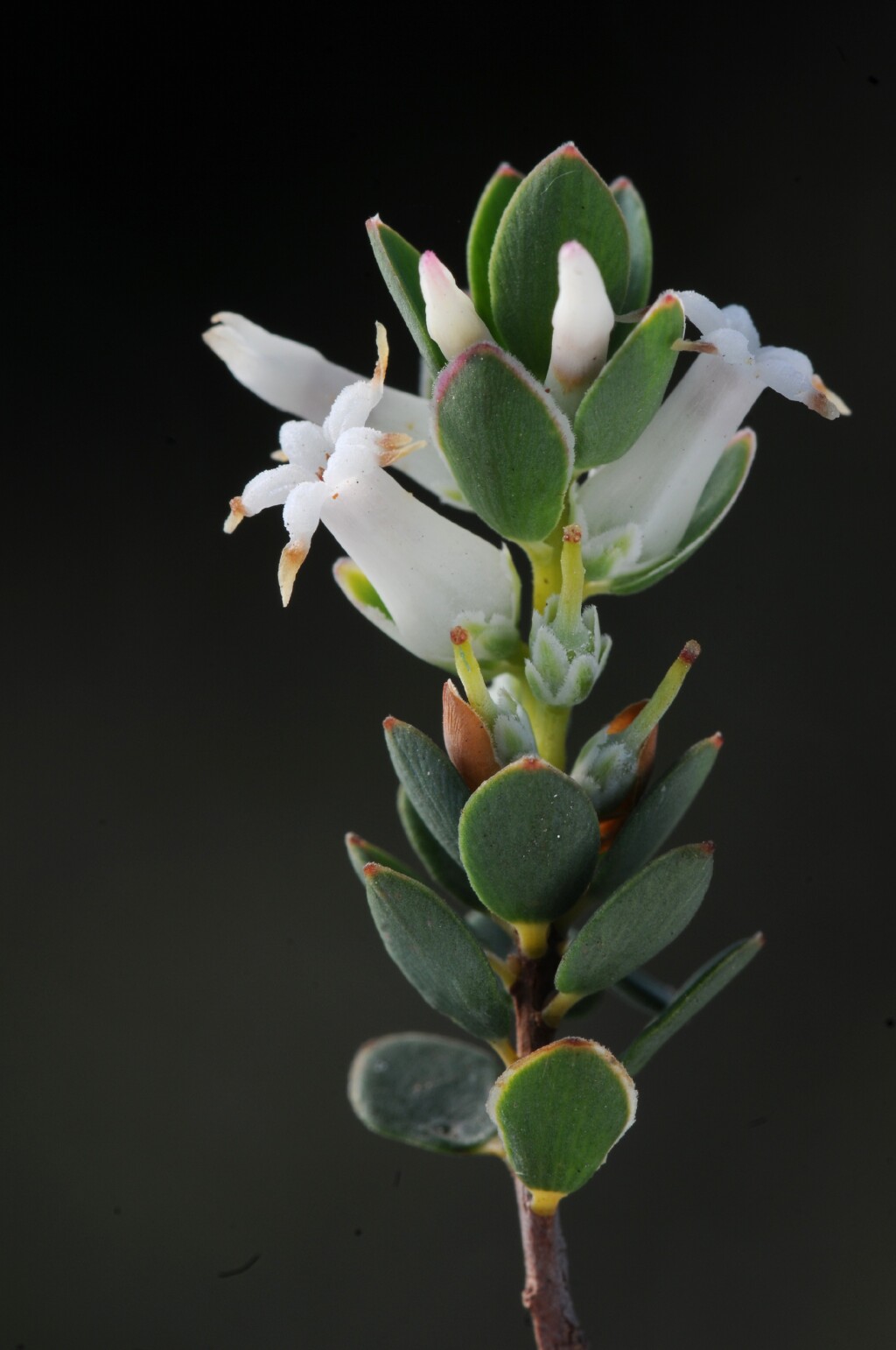Brachyloma
Erect or spreading shrubs. Leaves sessile or shortly petiolate, ± discolorous, lower surface with subparallel-palmate veins, those furthest from midvein with branches radiating to margin. Flowers bisexual, axillary, usually solitary (rarely in spikes), occurring on current or previous season's wood; each flower subtended by a caducous or persistent bract (sometimes leaf-like) and 2 bracteoles inserted immediately below the sepals, or bracts and bracteoles collectively several and grading in size to the 5 sepals; corolla 5-partite, cylindric to broadly campanulate-bulbous; tube with fringed scales or reflexed hairs in the throat (at least in Victoria); lobes obtuse to acuminate, imbricate in bud, erect to recurved in flower, papillose to pubescent inside; anthers enclosed to partially exserted from corolla tube; filaments distinctly flattened or obsolete, adnate to corolla tube; nectary annular, ± toothed; ovary glabrous, 3–10-locular with 1 ovule per locule, style glabrous to papillose-puberulent, cylindric, usually short, stigma lobed. Fruit a drupe, with a fleshy or thin mesocarp and a hard endocarp.
Endemic Australian genus with 17 species, occurring in all States except Northern Territory.
Brachyloma as currently accepted includes 2 or 3 possibly distinct elements, united by the fact of the corolla lobes being imbricate in bud. Further investigation may show these to be distinct genera.
Albrecht, D.E. (1996). Epacridaceae. In: Walsh, N.G.; Entwisle, T.J., Flora of Victoria Vol. 3, Dicotyledons Winteraceae to Myrtaceae, pp. 464–509. Inkata Press, Melbourne.
 Spinning
Spinning

